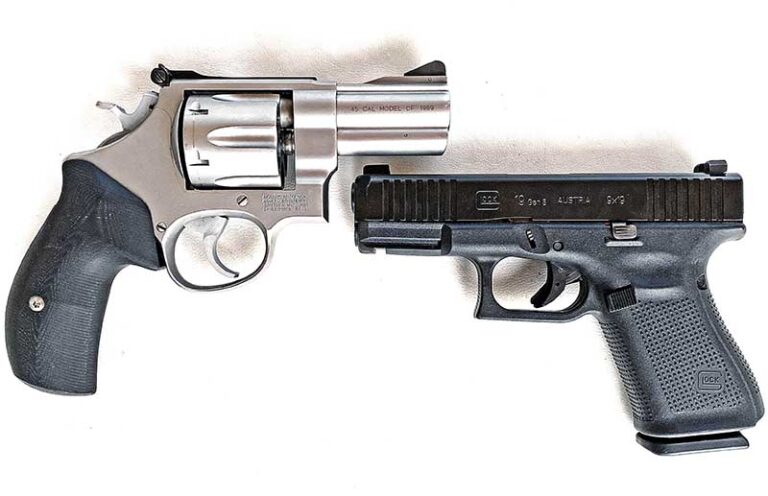
Hi-capacity 9mm pistols are popular right now, but they pale in power compared to the potential of a self-defense revolver.
In my heart, I’m a revolver guy. In a recent conversation with some industry friends, we began talking about my affinity and their opinions regarding wheelguns. They made an effort to gently let me know that they were dissatisfied with my previous inclusion of revolvers in my content, to the point where people may in fact be influenced to make a poor choice in self-defense gun.
Oddly enough, revolvers are, in their mind, not something I should be promoting due to the nature of violence in today’s world. The only tip or trick was to simply ditch revolvers in general, my advice on the topic being only to pander to rustics set in the past.
One stated if it weren’t for nostalgia, there’d be simply no reason to make them at all in the modern day, comparing them to vintage dial phones and horse-drawn carriages. Replicas and the like are just toys with no real-world use; any opinion to the contrary is just wishful thinking.
“Josh, you’re never going to be an Elmer Keith, and you should realize that by the time he wrote his works he was also behind the times.” One stated, “You’re telling people it’s alright to start at a severe disadvantage and make the best of it. It’s not right.”
Ethical concerns are something that we often face as writers; people listen to us, and you very well may spend hard-earned money after reading an article. Honesty is something that we in this job must have because, at the end of that line of thinking is a life potentially being taken, be it a bad guy or a game animal. The standard on which many writers opt to work with is often “just don’t make the advertisers mad,” and simply review a gun or ammo in the context of data only.
Objectively speaking, this is fine and allows the reader to draw their own conclusions on whatever product that may be. However, when the reality sets in, especially in self-defense topics, there needs to be the realistic nod to the fact that we’re talking about doing whatever it takes to defend ourselves.
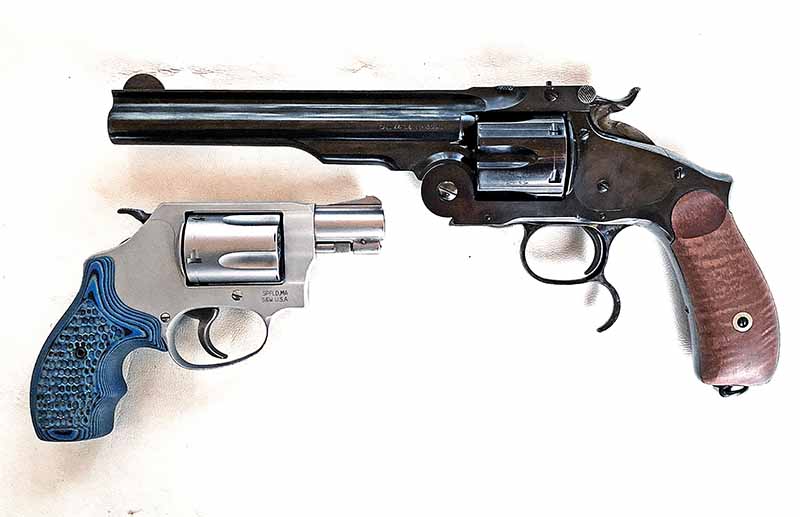
Dissecting The Dilution
There you have some excellent advice on shotguns for home defense from someone who is considered a master in the art. However, the last bit of advice Hartman provided may be the most important: “Once you figure out your defensive shotgun, the defensive mindset is next. The gun is useless to you if you don’t perceive the threat. Don’t get caught in condition white!
I lament this not because I want to see gore in magazines, but because I think people need to have respect for what bullets really do when they hit flesh and bone. Likewise, I think they need to find respect for what they consider toys or fun playthings. A revolver may lack capacity, but I find it incredulous that one would dismiss an entire category of gun as a liability when, in reality, a revolver is a tremendously lethal weapon.
Sanitized media and unrealistic training are the sole culprits in the idea that a revolver is an antique. Some classes I’ve attended that are supposed to be self-defense instruction have even gone so far as to ban revolvers and won’t teach them. Yet, the same classes want you to have a dolled-up nine, OWB holster, three extra mags and often more stuff on your person. You absolutely don’t need a modern 22+1 9mm with a red-dot, suppressor and light to survive a fight.
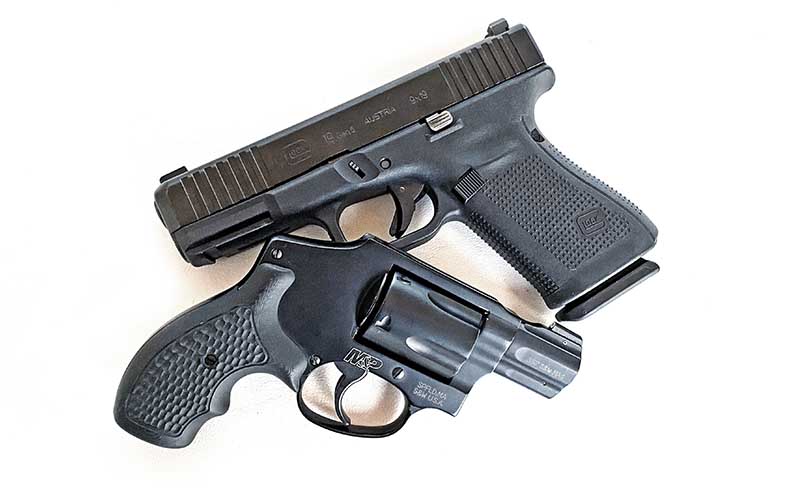
What you do need is a deep appreciation for what type of damage can be done by someone intent to harm—and what sort of harm you can do in return. If the instructor is making you train with stuff you aren’t going to carry at all times, you’re wasting your money. If an instructor won’t teach revolvers, they’re ignoring reality entirely. Pretending a category of weapon isn’t relevant because we have guns that hold more bullets is a sure way to get people killed.
What strikes me hardest about this entire situation is that it has led people to imagine that a .357 Magnum, with six rounds of 158-grain hardcast is a relic, yet I doubt a single person on earth would want to be within 1,000 yards of someone armed with one intent to do harm. Capacity isn’t the be-all and end-all for winning a fight, and I wish instructors would realize that by focusing on the realism of fleeing a fight or hiding. I’d love it if there was a class that took place in public places with fake guns, dealing solely with finding cover and escaping.
Beyond Capacity
There’s a preponderance of evidence that the modern revolver is a lethal instrument, offering serious advantages in close combat. The modern revolver came about with the Colt Single Action Army in the 1870s; everything else in the revolver world is basically there to address its perceived shortcomings. While slow to load and unload by today’s standards, the single-action revolver is as deadly as they come, very fast and very accurate.
Capacity notwithstanding, the .45 Colt, to this day, is a fearsomely powerful round and has sent scores of people and animals into the afterlife. I developed a 255-grain SWC Keith load that, from a 4¾-inch Colt, passed completely through three 16-inch FBI blocks end-to-end at 10 yards. At 25 yards, it also passed completely through.
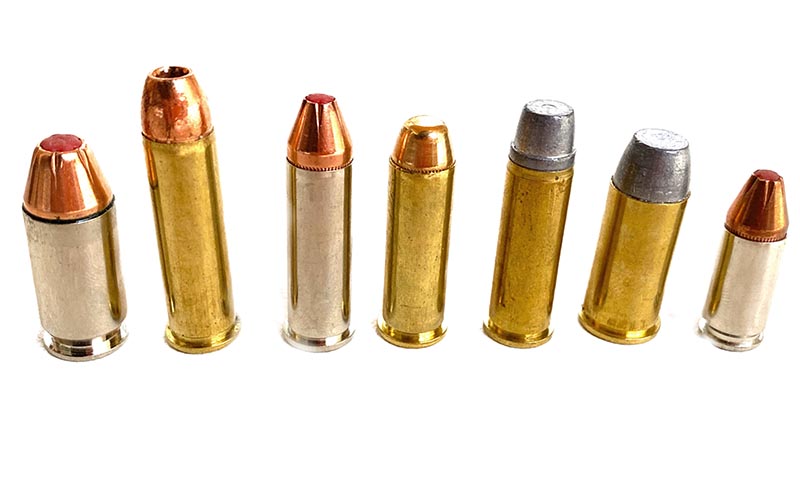
Modern cowboy loads are weaker as a rule, usually humming along at about 700 fps, and even these, such as the BHA 250-grain RNFP, will go clean through two blocks with ease. Keith wrote in his books about hunting with the .45 Colt and its ability to penetrate game at distance, himself shooting a large mountain goat with a 5½-inch Colt at long distance and having his bullets pass completely through for each shot on that tough beast.
Hardcast bullets are a major advantage in revolvers, allowing profiles semi-autos simply can’t feed. Among these are the cylindrical “man stopper” bullets and Keith semi-wadcutters. These bullet profiles are extraordinary in their ability to not just penetrate organic material, but they do substantially more damage than virtually any other bullet type.
A deer I shot with a .45-caliber Keith bullet looked like it had been crushed internally, whereas one I shot only days earlier with a 6.5 Creedmoor looked as if it had just been poked with a rapier. There’s much to be said of this bullet type; even in .38 Special, it offers penetration of material and flesh that can’t be readily matched by any jacketed loads of which I’m aware.
The Utilitarian Approach
Revolvers aren’t more reliable than modern semi-autos in a broad context. They have their own issues; however, they offer substantial advantages in close-range encounters and greater overall precision and power at distance.
There’s something of a bell curve when it comes to revolvers. For instance, if I knew I was going to grapple with someone and the gun would be pressed into clothing, I’d hands-down take a Smith J-frame, Ruger LCR or Colt Cobra. Force-on-force training is an eye-opener in this respect and, while they’re not useless, a semi-auto can be somewhat easily disabled if a bad guy grabs it. It can quickly turn to a single shot if the mag release is bumped. Malfunctions are an inevitability if wrestling with a semi-auto, whereas with a revolver, they’re far less frequent due to the lack of moving parts.
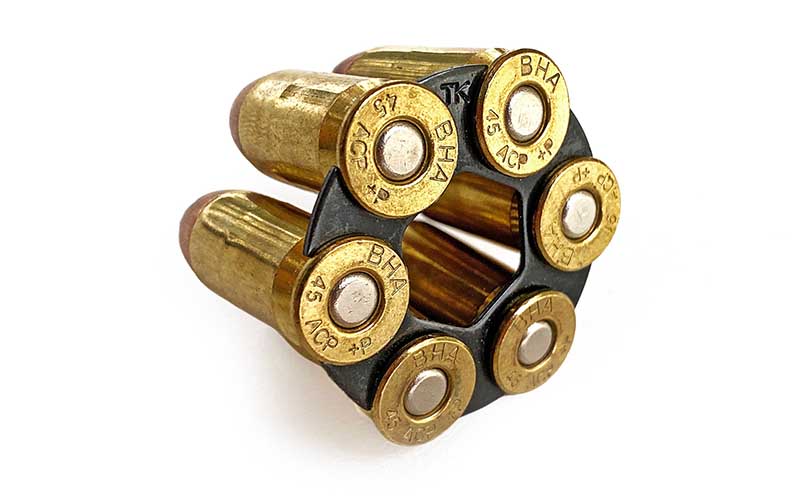
For ranges from 15 to 25 yards, I’d take a high-capacity 9mm every time. At 25 to 50 yards, I like the 1911, but at ranges overlapping 25 to 150 yards, I’d certainly want a heavy-loaded .357 Mag or 255-grain .45 Colt. Hit likelihood drops rapidly with semi-autos at distance, and even red-dots don’t extend useful range by much compared to irons. If it’s at extreme close range or at long range, I’d prefer a revolver virtually every day. That median stretch is where the semi-auto excels—though capacity advantage comes at a reduction in power as ranges increase.
Why would it matter to be able to make shots at 150 yards? For personal defense, it’s a moot point … but it does speak to the power of a revolver. However, in a field environment, often while I travel for hunting, I don’t carry three separate handguns on me, usually just one that fits my requirements. I like to know that my pistol can substitute a rifle at close to medium range.
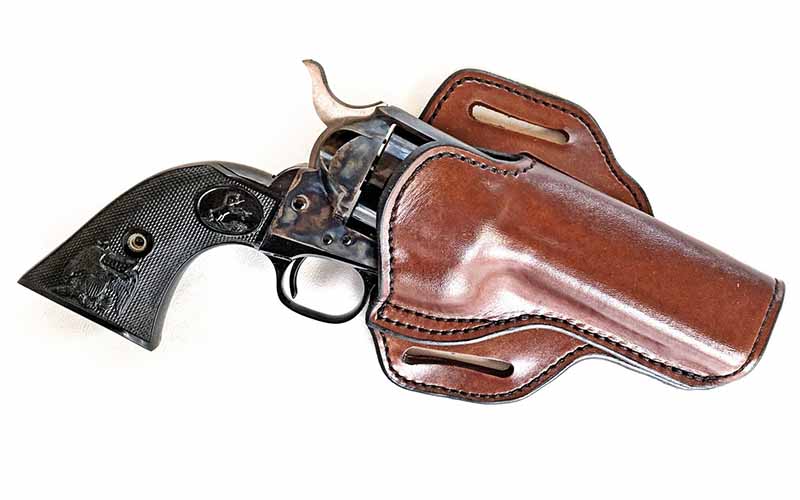
Hitting a 10-inch plate at 150 yards isn’t that hard with a good revolver and some practice. The 255-grain .45 Colt at 1,000 fps only loses about 120 fps from the muzzle to 150 yards. That means it’s still more powerful than a 230-grain .45 ACP point blank. Folks don’t realize that with most 5½- to 7½-inch Colts zeroed for 25 yards, you can just hold high on the shoulder of a deer at 100 yards; it drops less than a foot at that range.
The reliability of revolvers is much more than just going bang every time; their utility, power and extended range accuracy are some things semi-autos have a hard time matching. Even the best 1911s I’ve used are limited in power compared to a revolver, whether in a home-defense situation or in the field.
The 10mm Auto and .45 ACP each have a realistic maximum range of 50 yards on deer—due to the restrictions of their magazine lengths and operating pressures necessary for reliable function. I’ve used them all extensively and 10mm and .45 ACP drop deer just about the same, but both are minuscule in power when compared to the .45 Colt and .357 Mag. in real-world use. And we haven’t even addressed the .44 Special and .44 Magnum, never mind the .44 Russian.
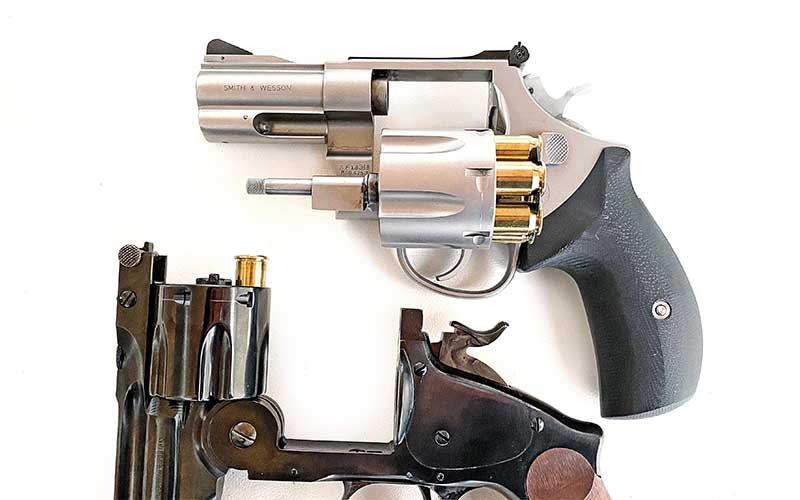
Timeless Protection
So, I stand fast to my beliefs that a revolver isn’t a useless tool, nor is it irrelevant in today’s defensive situations. If you’re a hand-loader, the revolver is your best friend, much like the bolt-action rifle. Not only are you afforded a wide range of pressure options, you’re also not limited to bullet profile.
The utility of a revolver in self-defense is subject to the individual encounter, and I’m a believer in its close-range superiority in a life-and-death struggle. The intent to use it lethally, be it in self-defense or in the field, has nothing to do with how many bullets you carry and how many you can fire. I don’t think it’s unethical and wrong to promote the use of what some consider antiquated technology any more than I find it unethical to voluntarily reduce power in favor of capacity.
Editor's Note: This article originally appeared in the April 2022 issue of Gun Digest the Magazine.
More On The Self-Defense Revolver:
- .357 Magnum Revolver: Controllable Concealed Carry Options
- 9 Best Concealed Carry Revolvers For Personal Defense
- Fighting Revolver Project: Smith & Wesson Model 586
- Rolling With A .45 ACP Revolver
- .410 Revolvers: Are They Really Good For Nothin’?
- Best 9mm Revolver: 5 Options For Everyday Carry

Next Step: Get your FREE Printable Target Pack
Enhance your shooting precision with our 62 MOA Targets, perfect for rifles and handguns. Crafted in collaboration with Storm Tactical for accuracy and versatility.
Subscribe to the Gun Digest email newsletter and get your downloadable target pack sent straight to your inbox. Stay updated with the latest firearms info in the industry.

![Best Concealed Carry Guns In 2025 [Field Tested] Wilson Combat EDC X9S 1](https://gundigest.com/wp-content/uploads/Wilson-Combat-EDC-X9S-1-324x160.jpg)


![Best 9mm Carbine: Affordable PCCs [Tested] Ruger Carbine Shooting](https://gundigest.com/wp-content/uploads/Ruger-Carbine-Shooting-100x70.jpg)
![Best AR-15: Top Options Available Today [Field Tested] Harrington and Richardson PSA XM177E2 feature](https://gundigest.com/wp-content/uploads/Harrington-and-Richardson-PSA-XM177E2-feature-100x70.jpg)

Author: “My fellow writers and friends have laid out specific and detailed reasons why revolvers should not be used in 99% of self-defense situations, but I’m going to ignore them, crime statistics and reality and tell you why I want you to agree with my opinion, not their facts.”
You should record a debate, your pro-revolver data on one side, your friends, John Coreia and their statistics on the other. Then let people decide. This was clearly an appeal to emotion, not reality.
Like you said, “Honesty is something that we in this job must have because, at the end of that line of thinking is a life potentially being taken […]”, yet you preface the entire article in the very first sentence avering that you have a serious bias, “revolver guy.”
So, which is it going to be? Honesty, or personal opinion that cannot reasonably be upheld for a majority of your readers?
I have several issues with revolvers as a self defense tool. I don’t argue that they can’t do exactly what they are designed to do, nor do I argue that they are powerful and reliable. Nor do I argue that they don’t fulfill a useful role in some unique scenarios (bear gun possibly among a few others.)
However let’s look at these facts. John Carreia has studied 40,000 use of deadly force incidents and has seen very, very very few reloads. Approaching zero actually. Thus we can assert that the rounds in the gun are all that’s realistically available. 40,000 is a very large sample size. We also see in this data a large number of multiple armed opponents. Opponents that often leave when any armed resistance is offered but that can’t be assumed.
We see accuracy rates well below 50% of rounds fired and we see very few one shot stops though they do occur. No study I’m aware of lists any pistol caliber round with a 100% stop percentage. Modern 9mm % stop data seems to approach 45 caliber, few people shoot a higher caliber pistol well though some like the writer undoubtedly do.
Thus for a serious self defense pistol for the average user we need enough capacity to place two rounds in multiple opponents without the ability to reload. This is from the data above. If you have different data please show me.
Given 6 rounds in a revolver, with 50% hits gives 1.5 bad guys down. If that’s enough for you or you believe your accuracy will be significantly beyond one standard deviation then you might choose differently. But to advise all but the most capable shooter to choose a revolvers capacity over the wide variety of accurate, reliable 9mm options is a mistake. 40 and 45 caliber se it’s exist with decent capacity as well.
Your argument is power over capacity. Yet you must achieve an unrealistic rate of accuracy (for most) to outdo the lack of capacity you have chosen. What % stop improvement does 357 magnum or 10mm achieve given the same shot placement? Why did the FBI drop 10mm and why have police departments nationwide dropped 40 caliber pistols for 9mms with nearly equal capacity?
Lastly, reliability. Yes, the revolver is more reliable (a concession some might quibble with but let’s set as a given.) How much more? If the mean rounds between stoppage in an average 9mm with proven ammo selection is high enough then the odds of a stoppage in the 15 round standard capacity Magazine becomes so low that the difference is meaningless.
Some modern semis have MRBS in the tens of thousands in FBI or military testing. Run the math with a given semi and I think you will find that the reliability factor can’t outweigh the ability to have enough capacity to deal with multiple opponents and the accuracy rate we see over 40,000 gunfights.
The revolver had its day but for all but the really best shooters today it’s not an option we should recommend to the average shooter. I don’t agree with banning it as it does have a place in some limited situations but I think we should not be recommending it. No, power doesn’t outweigh the need to deal with multiple opponents which we do see in the data today.
9 mm sucks. Police have to shoot so many in somebody to bring down a guy and he STILL SURVIVES. 9 mm is great for a pack of dogs. Center mass? How about the center of the head?
If you are attacked by 3+ determined thugs, and each is carrying a firearm, it doesn’t matter what you’re carrying. A 17+1 Glock 17 or a Smith and Wesson Model 27 with six .357 magnums.
You’re toast.
“Excuse me, bad guys! I’m going to put two in your buddy here … could you refrain from pulling the trigger while I do so? Thanks!”
The only defense against such an encounter is to travel in groups the same size, or avoid locales where such groups of predators are common. Cops carry Glock 17s with 18 rounds, and they still storm crack houses * en masse *, usually with shotguns or ARs for backup.
Capacity just doesn’t rate. What the commentor above failed to say is that in 90+% of Carreia’s videos, the total number of shots fired by all participants is below 10, and is usually around 3-6. In those videos, as soon as thugs run into any sort of armed resistance, they always vacate the area if they’re not taking a dirt nap.
The most important ability in an armed encounter is to hit fast, accurate, and hard. If you can’t hit a target at 3-7 yards with your first shot under stress, you need training. 9mm just does not have the terminal ballistics, even at short range, even with modern powders and bullets (which benefit all calibers of ammunition) of a 125 or 158 gr .357 magnum semi-jacked hollow point. Poor shooters use capacity to make up for skill and accuracy. Such a substitution is more likely to lead to a dead defender or injured bystanders than a successful self-defense encounter.
Mr. Wayner; your “industry friends” are idiots. If there were no demand or need, why are manufacturers still making so many different revolvers? I’m left handed, which is the one reason ALL of my handguns are revolvers. The controls aren’t so much of an issue as they were years ago, but that ejection port can still be a problem. It doesn’t matter at arm’s length, but when the weapon has to be pulled back into a retention position, that port is basically aimed at my face. Getting hit in the eye with hot brass during a close quarters fight is not a good thing. I’d also point out that it would be a good idea for every gun owner to have a few ‘obsolete’ guns in their collection. Given how unstable our world is right now, we could easily find ourselves in a situation where substandard and/or homemade ammo is all we have. If all you have to feed it is soft lead and black powder, that wonder-nine will be lucky to get off half the magazine before it’s hopelessly jammed.